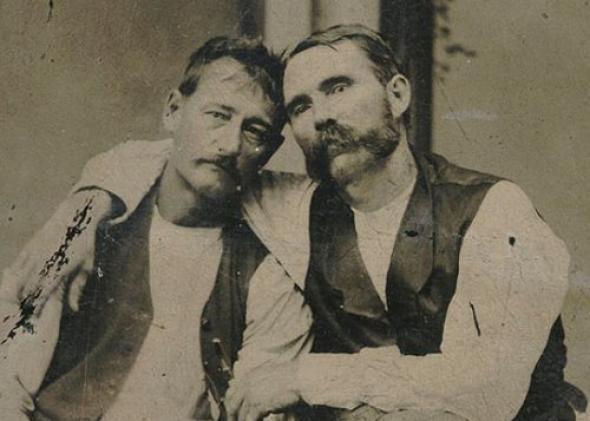On a trip to southern Spain a few years ago, my partner and I were invited to a friend’s home for Shabbat dinner. As we were seated at the table, our host, a maternal and physically affectionate gay man, continually petted us as he brought fragrant Sephardic food to the table. This is common among gay men and thus did not surprise me. But to this day I remember how my body froze when the other guest—a quiet but warm straight man—rose from his seat, picked up a kippah, gently placed it on my head, and patted the back of my neck. His platonic touch was totally nonchalant for him, and yet it electrified me—not because I found it erotic, but because, at that moment, I realized how rare that kind of fraternal male touch had been in my life. Straight men weren’t supposed to express affection this way.
Of course, Mediterranean cultures like Spain and Italy possess a higher degree of male homosocial comfort—it is not at all strange there to see two men walking with their arms around one another, sleeping on each other’s shoulder, holding hands, or even sharing a quick friendly kiss. But as Mark Greene recently observed over at The Good Men Project, trying that kind of thing in the U.S. could get you a black eye:
In America in particular, if a young man attempts gentle platonic contact with another young man, he faces a very real risk of homophobic backlash either by that person or by those who witness the contact. This is, in part, because we frame all contact by men as being intentionally sexual until proven otherwise. Couple this with the homophobia that runs rampant in our culture, and you get a recipe for increased touch isolation that damages the lives of the vast majority of men.
Greene, a straight man, justifies his support of gay marriage and general gay acceptance in part for this reason—as long as any kind of male affection automatically reads as sexual (and, given widespread cultural homophobia, threatening), men of all orientations are suffering and becoming emotionally stunted by a lack of homosocial intimacy. As he eloquently puts it:
As much as gay men have faced the brunt of homophobic violence, straight men have been banished to a desert of physical isolation by these same homophobic fanatics who police lesbians and gays in our society. The result has been a generation of American men who do not hug each other, do not hold hands and can not sit close together without the homophobic litmus test kicking in.
If you’ve never considered this painful lack in men’s lives, take a few minutes to read Greene’s piece, and think about what life might be like if men could do away with this taboo (he has a beautiful anecdote about rubbing his elderly father’s feet, for example). Also, take a moment to look at one of his sources, Bosom Buddies: A Photo History of Male Affection, which demonstrates that our current self-policing wasn’t always the norm. Indeed, though many of the couples in those pictures look gay to us now—a direct demonstration of our modern skewed perceptions of male intimacy—most of them were probably just good friends.
